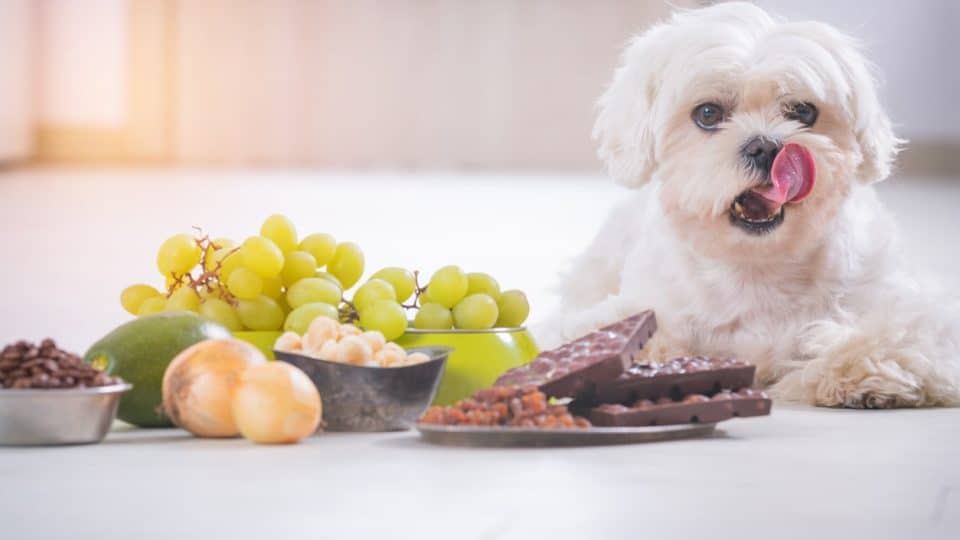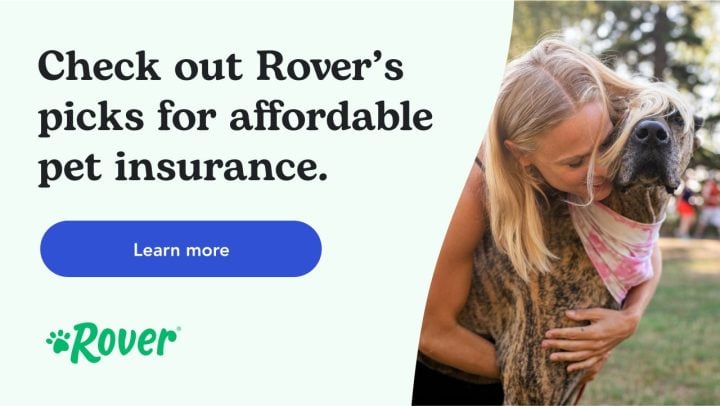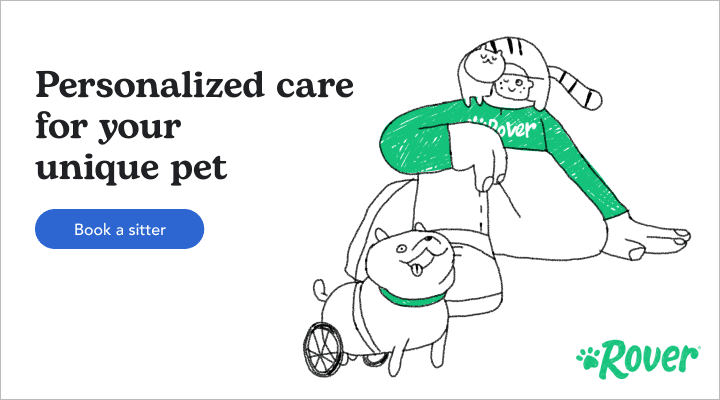- Not a substitute for professional veterinary help.
You’re just about to tuck into a delicious meal when you notice your dog is giving you their biggest puppy dog eyes and licking their lips. As difficult as it is to resist giving them a bite of your food, remember that some human foods are toxic for dogs.
“‘Toxic for dogs’ essentially means that exposure to the substance may result in a negative effect,” explains Dr. Renee Schmid, DVM, Senior Veterinary Toxicologist at Pet Poison Helpline. “There are different severities, and some things that are toxic may only cause stomach upset, while others may result in death.”
We have compiled an easy-to-reference list of the most toxic food for dogs. If you’re ever in doubt about whether a food is harmful or not, it’s best to be cautious and avoid giving it to your dog. If your dog has eaten something toxic, see a vet right away.
1. Alcohol/Ethanol Products & Hops
Most pet parents know they shouldn’t give their dogs alcohol. However, alcohol poisoning in dogs still occurs. Dogs may consume alcohol by mopping up spilled drinks or even taking a sip right out of your glass!
Alcohol poisoning can cause drops in blood sugar, blood pressure, and even body temperature. In the worst cases, dogs can have seizures and breathing failures.
Extra care should be taken with all alcohol products, including:
2. Xylitol
Every pet parent should be aware of the dangers of xylitol. This natural, sugar-free sweetener is often found in gelatin snacks, peanut butter, and candy. Lots of “sugar-free” products have xylitol in them because the sweetener is added to replace the sugar.
Only a small amount of xylitol needs to be ingested to have fatal consequences. It can cause acute liver failure and dangerously low blood sugar levels.
Alternative names of xylitol to look out for include:
- Xylitol
- Birch Sugar, E967
- Meso-Xylitol / Méso-Xylitol
- Sucre de Bouleau
- Xilitol / Xylit / Xylite
- Xylo-pentane-1,2,3,4,5-pentol
3. Grapes & Raisins
Grapes and raisins are also very toxic to dogs and should be avoided. It is still unknown exactly how these fruits cause toxicity, but the dangers of them are widely studied and known.
All grape products can cause toxicity and should be kept away from dogs. These can include:
- Grapes
- Raisins
- Sultanas
- Currants
- Grape juice
- Trail mix with raisins
- Cookies and bars that contain raisin paste
- Breads and other baked goods that contain raisin juice
Ingestion of grapes and raisins can cause vomiting, diarrhea, and renal disease.
Lastly, Dr. Schmid says that not all dogs react to grapes and raisins the same way. The amount that is toxic to one dog might not be toxic to another.
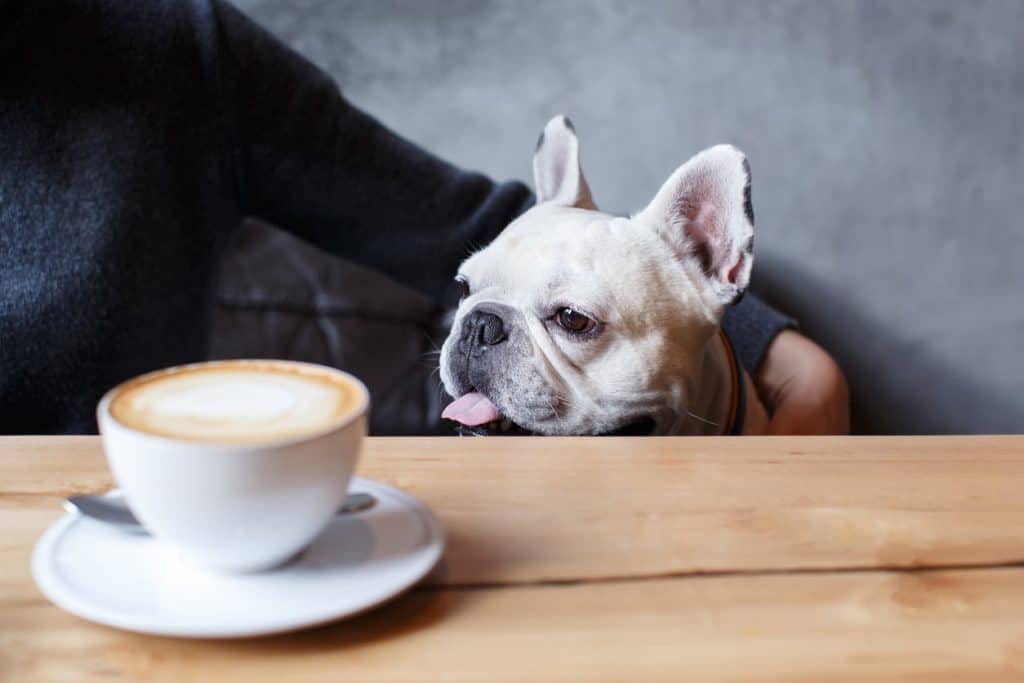
iStock/Valeriya Anufriyeva
4. Coffee & Caffeine
Most of us need a cup of coffee in the morning to get us going, but the same is definitely not true for our dogs! Caffeine, the primary drug in coffee, can be dangerous for dogs.
Caffeine is contained in lots of food products, including coffee, tea, energy drinks, carbonated water, and soda pop. Though a lick or two of spilled tea or coffee will unlikely cause poisoning, ingestion of coffee grounds, tea bags, or coffee beans can.
Symptoms of caffeine poisoning can include hyperactivity, vomiting, and tremors. In severe cases, caffeine ingestion can cause seizures and be fatal.
5. Bread Dough & Yeast
As delicious as the smell of fresh bread is, unbaked bread dough and yeast are dangerous for dogs to eat. When ingested, bread dough releases lots of carbon dioxide, which can bloat and twist a dog’s stomach.
In severe cases, eating bread dough can lead to elevated heart rates, collapse, and death.
Lastly, the yeast within the bread dough causes the sugars present to ferment and release alcohol. This can subsequently lead to alcohol poisoning.
6. Garlic, Onions & Onion Varieties
Vegetables part of the Allium family are all poisonous to dogs. These include:
These particular vegetables are considered a particularly dangerous human food for dogs because they can damage and rupture red blood cells. This can lead to anemia, increased heart rate, vomiting, and more.
7. Candy, Chocolate & Gum
It’s best to avoid giving your dog any form of candy, especially chocolate and gum.
Chocolate contains both caffeine and theobromine which can be very dangerous for dogs to eat. Additionally, sugar-free kinds of candies and gum can contain the dangerous chemical xylitol and should also be avoided.
Lastly, the high sugar content of regular candies is also problematic for dogs because they can cause upset stomachs by disrupting the natural biome of your dog’s gut.
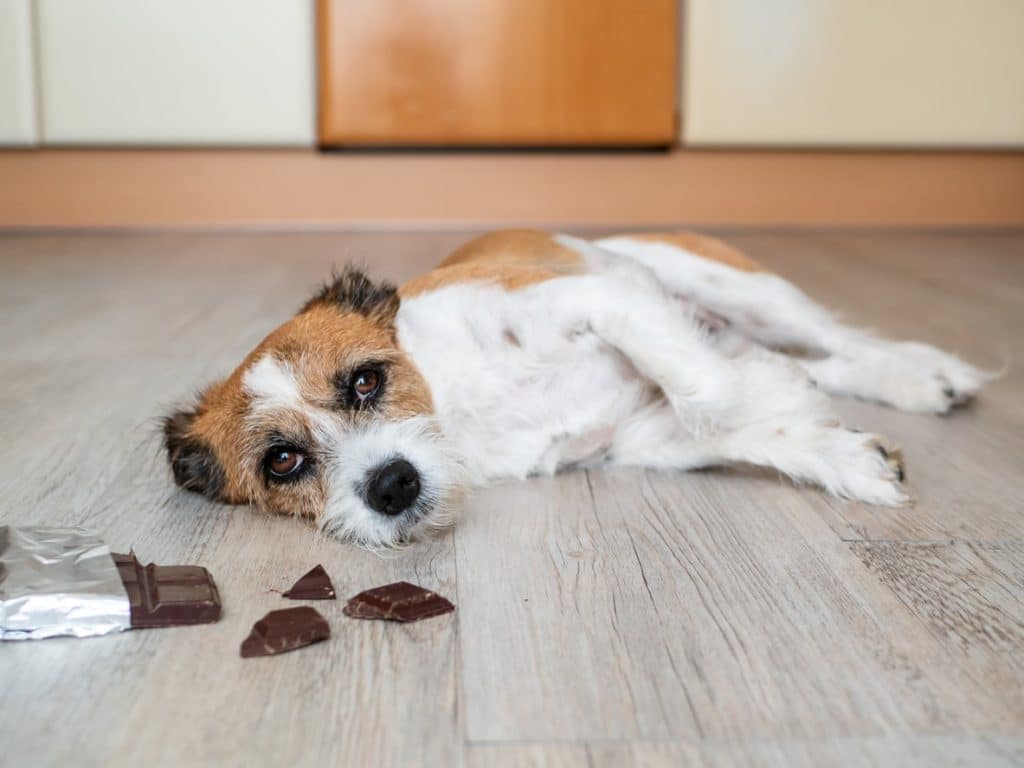
iStock/Sonja Rachbauer
8. Mushrooms
Just like with us humans, some species of mushrooms are safe for dogs to eat, and some can be deadly. Knowing which one is which can be incredibly difficult to discern, especially if you aren’t an avid wild mushroom forager.
It’s recommended to treat all wild mushrooms as toxic and not let your dog eat any of them. For example, the Death Cap mushroom is common in U.S. coastal areas and is highly toxic to dogs.
9. Nuts
Similar to mushrooms, there are multiple types of nuts available, and not all of them are safe for dogs to eat. Shelled peanuts (though not strictly a nut) are safe for dogs to eat, and most dogs love a lick of peanut butter.
Generally, nuts should be avoided. The ones that are safe for dogs to eat, such as almonds and pistachios, can cause obstructions in a dog’s digestive system.
Nuts that are not safe for dogs to eat include:
10. Avocado
Dogs can eat very small amounts of avocado flesh, but the pits, skin, and leaves are highly toxic to dogs. This is because avocados contain persin, a fungicidal toxin.
It’s also recommended to keep avocados away from dogs because of the pit. If the avocado pit is ingested, it can form blockages in your dog’s digestive system, which, in the worst cases, can be fatal.
11. Rhubarb Leaves
The stems of rhubarb are safe for dogs to eat, but the rhubarb leaves are not. Rhubarb contains soluble oxalate crystals that bind to the body’s calcium, causing a drop in calcium levels.
All parts of rhubarb contain soluble oxalate crystals, but they are especially concentrated in the rhubarb leaves.
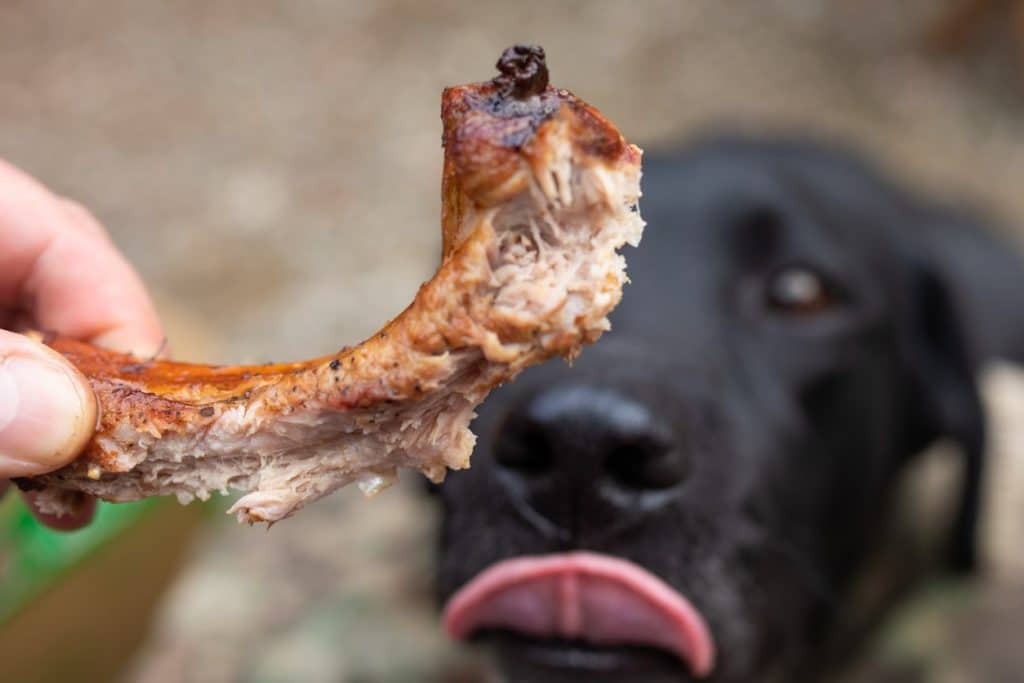
iStock/petesphotography
12. Meat Bones
The risks of giving your dog a meat bone depend on whether the bone is cooked or raw and the animal it came from.
Cooking bones weakens their structure which can cause them to splinter and seriously damage your dog’s digestive tract. It’s recommended not to give your dog any cooked animal bones.
Raw bones, on the other hand, can be great for dental health, but it does depend on the animal they came from. Raw bones from larger animals, such as beef, lamb, and ham, can be given to your dog, but bones from smaller animals, such as chickens and rabbits, should be avoided.
All raw bones should be given to dogs under supervision because, even though the likelihood is low, raw bones can splinter too.
13. Salt & Salty Snacks
Salt can be poisonous to dogs and should be kept out of reach of wandering paws. If dogs ingest too much salt, it can lead to salt poisoning, which causes diarrhea, lethargy, and incoordination. In severe cases, salt poisoning can lead to tremors, seizures, and even death.
Salt can be found in lots of household products, including table salt, de-icing rock salt, and playdough. Try to store these items up high and away from your dog.
It’s also best to avoid sharing your salty snacks with your dog too. Keep the fries and popcorn to yourself, and give your dog some unsalted, sweet potato snacks instead.
14. Tomato Leaves & Stems
Dogs can eat the flesh of tomatoes when they are red and ripened, but they should only be given in small amounts. Even though the ripened fruit is non-toxic, it is acidic, which can cause upset stomachs.
In contrast, unripened, green tomatoes, as well as tomato leaves and stems, are toxic to dogs. These parts of the tomato contain the toxin solanine which is dangerous for dogs to eat.
15. Potato Leaves & Stems
Just like with tomatoes, potatoes also contain the toxin solanine. The leaves, stems, sprouts, and green parts of potatoes have the highest concentration of this toxin, so these parts of the potato should never be given to dogs to eat.
The potato itself can be enjoyed by dogs, but only after it has been cooked. The levels of solanine reduce as the potato cooks, making it acceptable for dogs to consume.
Sweet potatoes, on the other hand, do not contain solanine, making them a great potato snack alternative.
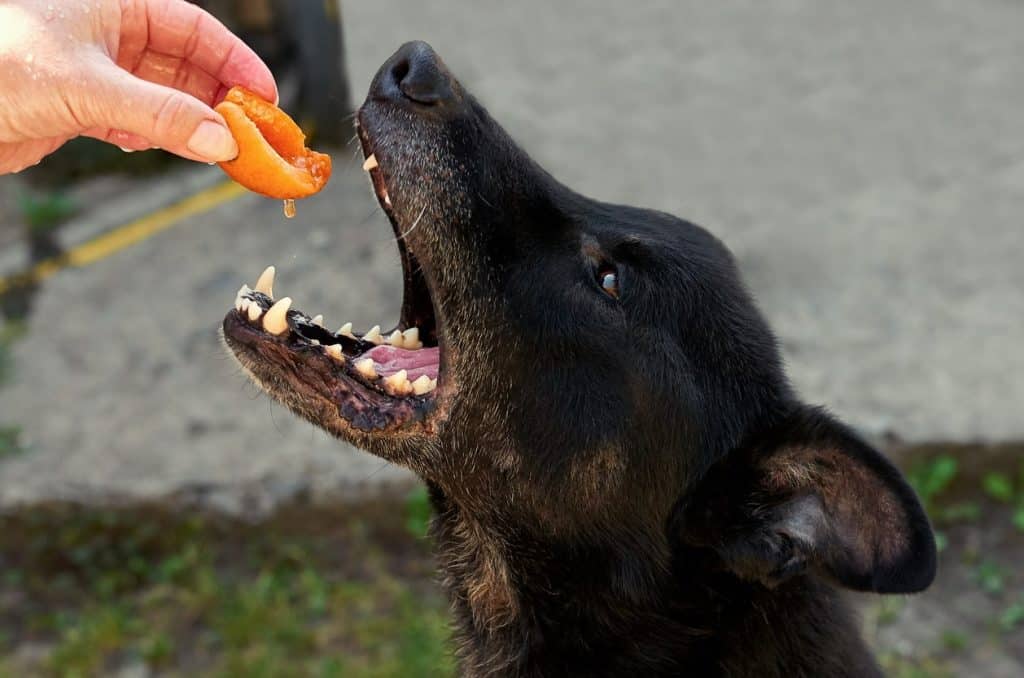
iStock/Vera Kornienko
16. Apricot, Peach & Cherry Pits
Several members of the Prunus species contain amygdalin, a toxin that can cause cyanide poisoning.
The most commonly known fruits that belong to this group include:
When the pits of these fruits are chewed and broken down, they can cause cyanide to be released into the bloodstream. If the pits are swallowed whole, they can lodge in a dog’s digestive tract and cause obstructions.
Dogs can enjoy the flesh of these fruits, and they make delicious treats, but always avoid the pits, stems, and leaves.
17. Apple Seeds
Apples make delicious, healthy snacks for dogs, but the seeds and core that come with them also contain the toxin amygdalin.
Large quantities of apple seeds have to be ground down and consumed before any poisoning. If your dog swallows one or two seeds, you don’t need to worry.
Overallt, it’s best to avoid giving dogs the apple core and seeds since they can upset a dog’s digestion.
What To Do If Your Dog Eats A Toxic Food?
So now that you know what the harmful foods for dogs are, what should you do if your dog eats any of them?
Dr. Schmid advises you to call your veterinarian or the Pet Poison helpline to receive guidance and determine if the amount the pet ingested is enough to cause a problem or not.
Importantly, Dr. Schmid says it’s very important pet parents don’t try to start treatments on their own at home. As well-intentioned as it may be, it can end up causing more problems and be detrimental to the health of the dog.
